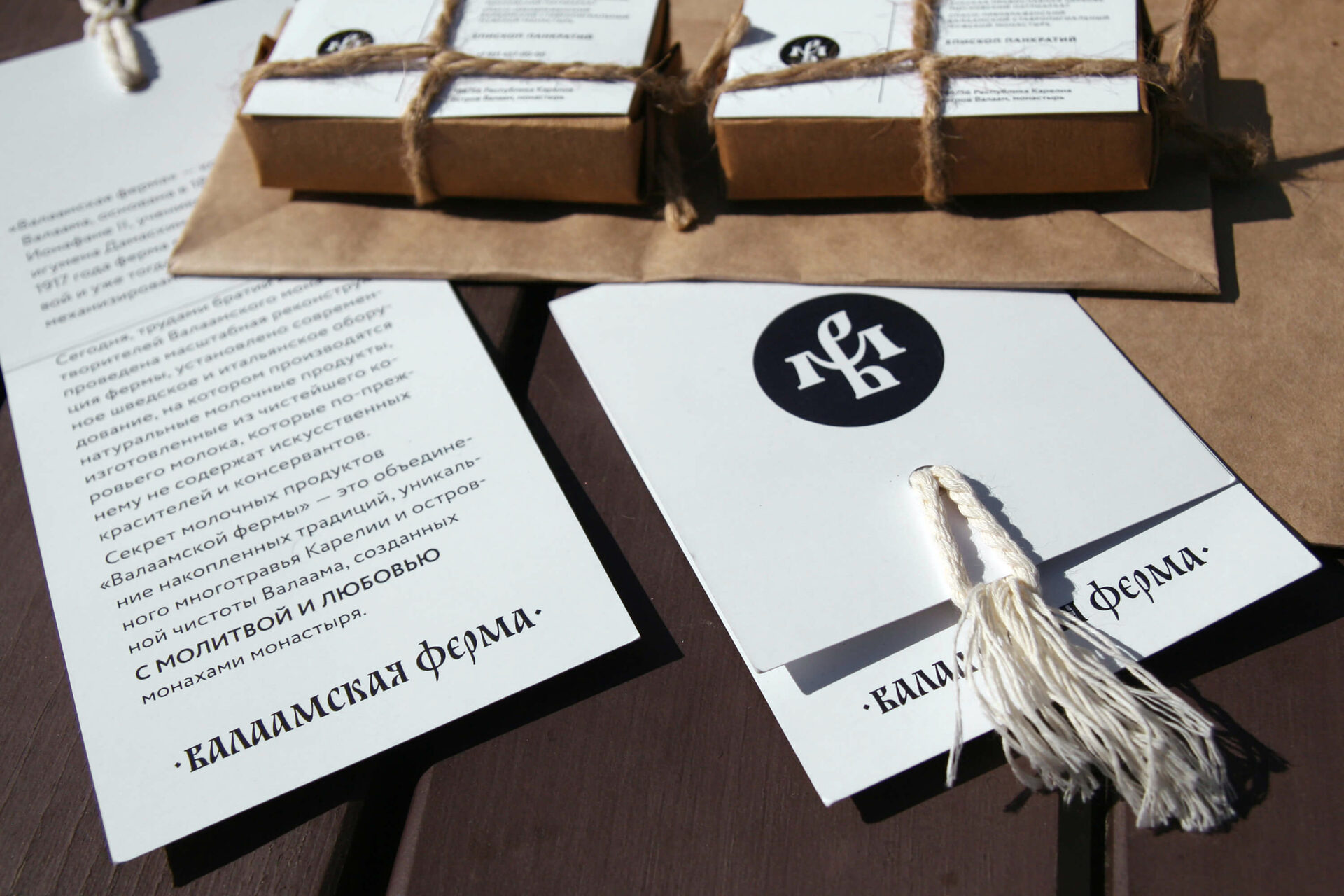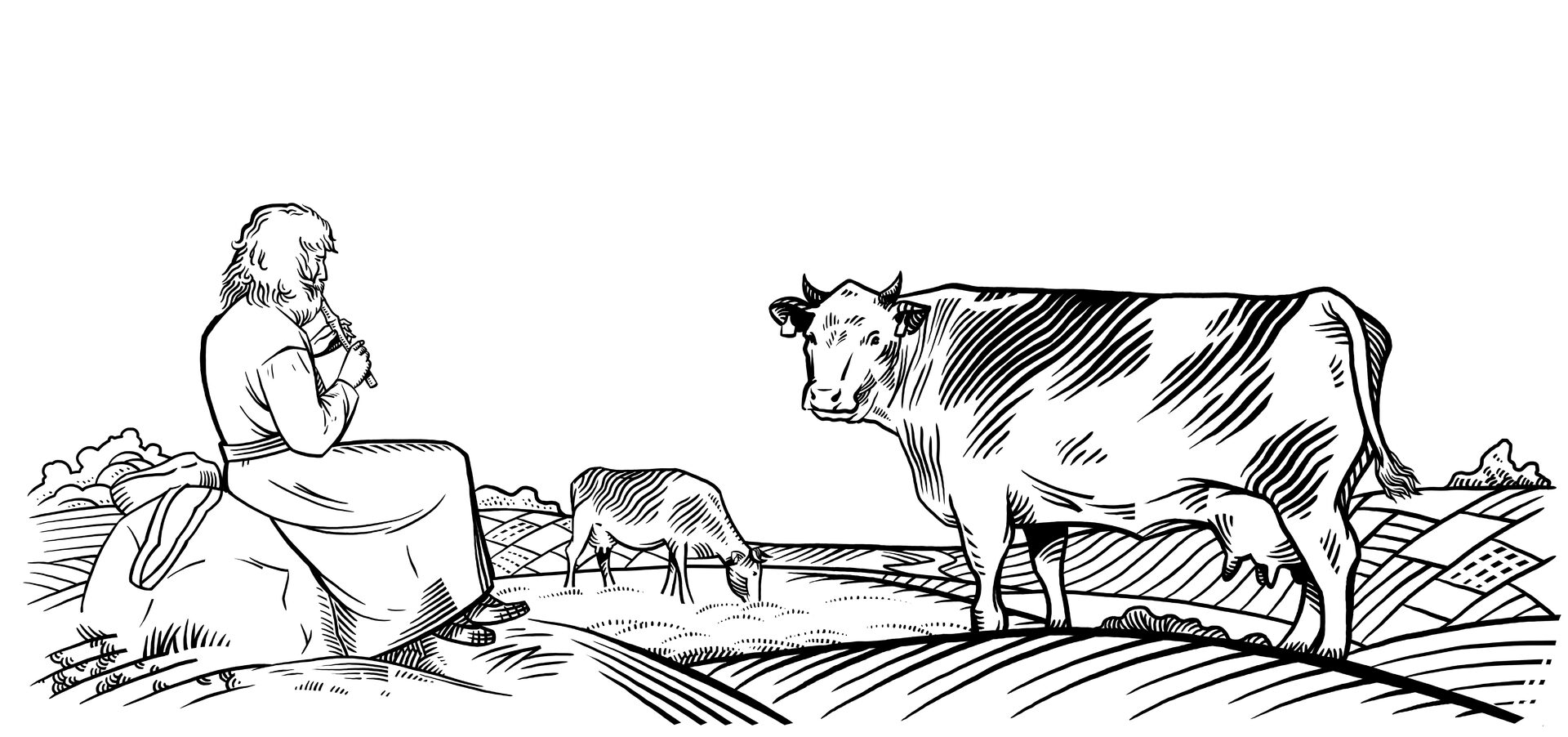FARMING
VALAAM MONASTERY
BRAND
CREATION OF THE






ABOUT VALAAM FARM
From the moment the Valaam monastery was founded in the 15th century, its monks were not only prayer books, but also farmers: they raised cattle, baked bread, and cultivated the fields. Observing a strict fast and adhering to an ascetic way of life, the ascetics sold surplus honey and milk to travelers. Over the years, the economy developed, and soon the products of the monastery farm became a truly desirable purchase for pilgrims.
For many years, the monastery sold its goods separately, without uniting them visually or in meaning. Commercially, this was not so important: pilgrims came to the islands not for bread and honey, but in search of a spiritual beginning and new experiences. Valaam combines many aspects of life: regardless of their attitude to religious issues, almost every resident of Russia has heard something about this place. Some here are interested in the natural wealth of Karelia; others - prayer works; third - carefully preserved traditions.
For many years, the monastery sold its goods separately, without uniting them visually or in meaning. Commercially, this was not so important: pilgrims came to the islands not for bread and honey, but in search of a spiritual beginning and new experiences. Valaam combines many aspects of life: regardless of their attitude to religious issues, almost every resident of Russia has heard something about this place. Some here are interested in the natural wealth of Karelia; others - prayer works; third - carefully preserved traditions.
RESEARCH
To understand how the spiritual life penetrates the life of the monastery and is passed on to pilgrims, we went to Valaam. All monastic households - whether it's fishing or working in a bakery - are run by monks. This historically established way of life was preserved for centuries: neither new technologies nor the increased number of pilgrims, nor the expansion of the farm as such, violated it. On the contrary, the economy has grown and strengthened, so it was critically important to unite all areas of development under one brand.
DEVELOPMENT STRATEGY
The main difficulty in creating a strategy for the development of the Valaam farm was the multi-level connection of the farms of the monastery. To solve this problem, we applied the classic planetary branding architecture. The architecture of the brand of the Valaam Monastery that we have developed consists of three levels



Manufacturer's brand - has its own logo and design system, as well as general positioning
Level
1
3
Level
The structure of the assortment lines - obeys the logic of the 2nd level, does not have its own logos, is differentiated only by the color and shape of the packaging
2
Level
Production brand - each production has its own logo and clear positioning, but is subordinate to the manufacturer's brand both at the level of visual perception and in terms of meanings
DEVELOPMENT OF THE SIGN OF THE MONASTERY
In the past, the Valaam Monastery widely used the emblem depicting the patron saints of the island: Sergius and Herman. In fact, this sign was a miniature icon, which imposed significant restrictions on its use.
The fact is that during the development of the brand of the Valaam monastery and its farms, the main carriers of the sign should have been packaging materials: paper, labels and boxes - the purpose of which is utilitarian.
Used packaging, as a rule, is thrown away - if iconographic images are depicted on it, this action can be interpreted as desecration of a shrine.
The fact is that during the development of the brand of the Valaam monastery and its farms, the main carriers of the sign should have been packaging materials: paper, labels and boxes - the purpose of which is utilitarian.
Used packaging, as a rule, is thrown away - if iconographic images are depicted on it, this action can be interpreted as desecration of a shrine.

Фотография с сайта valaamferma.ru
OUR TASK IS TO CREATE A SYMBOL WHICH COULD BE USED FREELY ON ALL LEVELS OF COMMUNICATION - BOTH IN THE SPIRITUAL SPHERE AND IN SOLVING ECONOMIC ISSUES
OUR TASK IS TO CREATE A SYMBOL WHICH COULD BE USED FREELY ON ALL LEVELS OF COMMUNICATION - BOTH IN THE SPIRITUAL SPHERE AND IN SOLVING ECONOMIC ISSUES
The idea to create a sign in the form of a monogram was born when we saw a 19th century brick produced at one of the monastery manufactories.
It was stamped with a laconic "V.M." – it was this detail that allowed us to build a relationship between the traditions of monastic production and modernity. We stylized the capital letters of the name of the monastery under the Slavic spelling and combined them in such a way that their combination resembled a cross in shape, and then inscribed the resulting monogram in a circle - the symbol of the island.
The font part of the sign of the Valaam Monastery is designed on the basis of two types of Slavic calligraphy: ligature and semi-character. Her graphics pay tribute to the traditions of ancient Russian writing, but are devoid of excessive archaism due to the modern plasticity of lines.
VALAAM FARM
Work on the brand of the Valaam farm has become the basis for positioning all farms subordinate to it. In difference from commercial production, the main element of the economy here is not a wide assortment, but an emotional content of goods

POSITIONING THE MIRACLE OF HEALTHY TASTE / POSITIONING THE MIRACLE OF HEALTHY TASTE / POSITIONING THE MIRACLE OF HEALTHY TASTE / POSITIONING THE MIRACLE OF HEALTHY TASTE
Traditions
Traditional taste of real products
Safe taste of healthy food
Safety
Taste that brings pleasure
Pleasure
Modern approaches to creating a familiar taste
Relevance
Monastic traditions in the context of the modern world create a kind of "miracle" - a recipe that combines the purity of the nature of Karelia, innovative approaches and secrets of production, which the monks - the bearers of true knowledge - have kept within the walls of the monastery for centuries.
With the concept of taste we reflected the values of the brand.
FORM STYLE
Creating the corporate identity of the Valaam farm, we still consciously avoided iconographic images. The images used in the design of the packaging are graphic drawings of the products of the monastery farms.
At the same time, it was not by chance that we turned to engravings: historically, Valaam attracted the attention of artists who formed a special visual culture around the monastery. A reference to artistic traditions is a tribute to the historical heritage of the monastery.

Craft paper, thick cardboard, glass, twine, wax seals with the monastery logo are design elements associated with environmentally friendly production approaches
For the packaging of goods, a style was chosen that reflects the brand's concern for the preservation of natural wealth.


